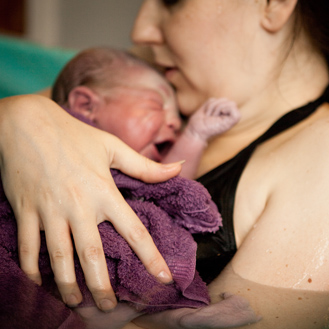
March 25, 2024
By Jessica Kim, Drexel University College of Medicine
Pregnant people in the United States have many options when it comes to planning what their labor and delivery experience looks like. Common options include home delivery, various types of delivery centers and the hospital. In the United States and other western countries, hospital deliveries have largely become the default. Each option comes with its own benefits and downsides. Aside from pregnant people who are identified as high-risk pregnancies and should unequivocally plan to deliver in the hospital, others have more options to consider1.
Labor and delivery at home can be attractive for many reasons. It allows pregnant people to have this sacred experience in the comfort of their own home. At home, there are no restrictions on the number of people that can be in the room to provide support during the labor and delivery process, as there may be in delivery centers and hospitals. Naturally, pregnant people that deliver at home are less likely to receive invasive procedures such as a C-section. These benefits must be weighed against the risks associated with at home delivery. A retrospective cohort study published in 2015 by researchers in Oregon demonstrated that there was a higher risk of perinatal death and increased odds for neonatal seizures among those who planned out-of-hospital births2. On this note, the major drawback of delivering at home is the risk of an emergency. Approximately 15% of planned at-home births result in transfer to the hospital3. If something unexpected arises that requires medical attention, for either mother or newborn, the time it takes to reach the hospital is critical.
In the United States, the majority of pregnant people make the decision to deliver at the hospital. The major benefits include the availability of people and equipment required during emergency situations. Lifesaving resources like blood products, ORs and intensive care units are in close proximity and prepared for worst case scenarios. Additionally, at the hospital, pregnant patients have access to pharmacological pain relievers like neuraxial anesthesia and IV fentanyl. The trade-off to delivering in the hospital includes things like depersonalized hospital rooms and being surrounded by strangers – nurses, doctors, medical students. Most hospitals have visitor limitations and strict rules about how many people can be in the delivery room at one time. Lastly, by delivering in the hospital, patients are more likely to be subject to invasive procedures such as IVs, digital vaginal examination and C-sections. In a retrospective study published in 2020 that looked at C-section delivery rates in California hospitals, researchers found 772,529 (30.35%) of pregnancies resulted in C-section delivery4. This is consistent with the upward trend of C-sections in the U.S. and high rate compared to European and Asian countries5.
In summary, the decision whether to deliver at home or at the hospital is a personal choice that must be made by each pregnant person and their health care provider. When making this decision, some questions that pregnant people can ask themselves are: Am I someone with a high-risk pregnancy? Who do I want in the room while I deliver? How close is the nearest hospital? What does my support system look like? What will my pain relief plan look like?
Sources/Resources:
- Healthwise Staff. Pregnancy: deciding where to deliver. Kaiser Permanente. https://healthy.kaiserpermanente.org/health-wellness/health-encyclopedia/he.pregnancy-deciding-where-to-deliver.hw194333
- Snowden JM, Tilden EL, Snyder J, Quigley B, Caughey AB, Cheng YW. Planned out-of-hospital birth and birth outcomes. New England Journal of Medicine. 2015; 373:2642-2653
- Ecker J. Where is best for birth: hospital or home? Harvard Health Blog. https://www.health.harvard.edu/blog/where-is-best-for-birth-hospital-or-home-201601149001
- Ghafari-Saravi A, Chaiken SR, Packer CH, Davitt CC, Garg Bharti, Caughey AB. Cesarean delivery rates by hospital type among nulliparous and multiparous patients. Journal of Maternal-Fetal and Neonatal Medicine. 2022;35(25):8631-8639
- Betran AP, Ye J, Moller AB, Zhang J, Gulmezoglu AM, Torioni MR. The increasing trend in caesarean section rates: global, regional and national estimates: 1990-2014. PLoS. ONE 2016